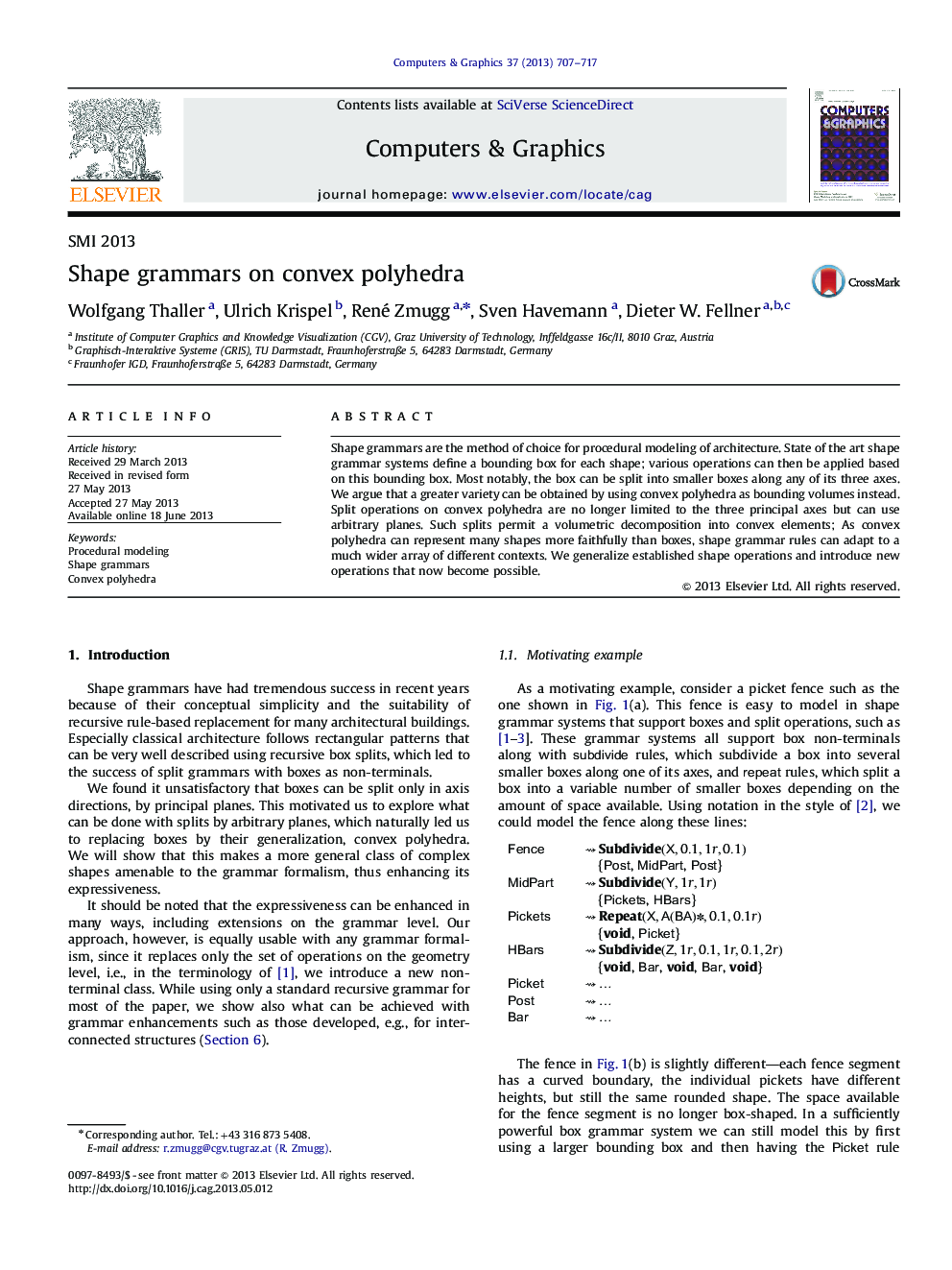| Article ID | Journal | Published Year | Pages | File Type |
|---|---|---|---|---|
| 441982 | Computers & Graphics | 2013 | 11 Pages |
•We extend shape grammars to use convex polyhedra instead of bounding boxes.•Arbitrary splits replace axis-parallel splits, allowing much richer geometry.•Shape grammar rules adapt to a much wider range of shapes.•Slanted and nonrectangular shapes common in architecture can be handled.•Established shape operations generalized, new operations now possible.
Shape grammars are the method of choice for procedural modeling of architecture. State of the art shape grammar systems define a bounding box for each shape; various operations can then be applied based on this bounding box. Most notably, the box can be split into smaller boxes along any of its three axes. We argue that a greater variety can be obtained by using convex polyhedra as bounding volumes instead. Split operations on convex polyhedra are no longer limited to the three principal axes but can use arbitrary planes. Such splits permit a volumetric decomposition into convex elements; As convex polyhedra can represent many shapes more faithfully than boxes, shape grammar rules can adapt to a much wider array of different contexts. We generalize established shape operations and introduce new operations that now become possible.
Graphical abstractFigure optionsDownload full-size imageDownload high-quality image (185 K)Download as PowerPoint slide
